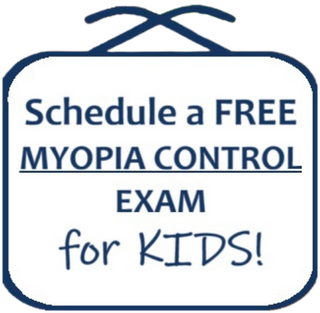Visiting an ophthalmologist might seem a bit overwhelming, but understanding what to expect can make the experience much smoother. An ophthalmology appointment offers a great opportunity to ensure your eyes are healthy, whether you’re just scheduling routine care or have specific concerns. Understanding the steps involved can help you feel more confident and informed about your visit.
During an appointment, the eye doctor conducts various tests and gathers information to assess your eye health. This comprehensive approach ensures that no detail is overlooked, whether you’re expressing concerns about your vision or maintaining routine check-ups. Let’s walk through what typically happens during an ophthalmology appointment, so you’ll know exactly what to look forward to when you walk through those doors.
Initial Consultation And Patient History
When you arrive for your appointment, the first step is usually a quick check-in at the front desk. Here, you’ll confirm personal details and insurance information. This helps the clinic ensure they’re ready to provide personalized service tailored to your needs. Afterward, you’ll be taken to a consultation room, where the detailed part of your appointment begins.
The initial consultation often involves questions about your health and vision history. Expect the doctor to ask about any current symptoms, past eye problems, medications you might be taking, and family medical history related to vision. This discussion helps identify any factors that could affect your eye health or predispose you to certain conditions.
Gathering this background information helps your ophthalmologist understand the context of your visit and your overall health. It’s a bit like giving them the full story so they can provide the best care possible. Being honest and thorough here ensures they have everything needed to manage your eye health effectively.
As you consider what to discuss, remember these pointers:
– Think about any recent changes in your vision, even if they seem minor.
– Recall any family history of eye diseases, which may be significant.
– Mention any persistent symptoms, such as headaches or eye strain.
– Note any history of wearing glasses or contacts and any issues you’ve had with them.
Taking a few moments to prepare can make this step more comfortable and useful for both you and your doctor.
Eye Examination Procedures
During your ophthalmology appointment, the core part involves various eye exams designed to give a clear picture of your eye health. These tests are gentle, but each plays a crucial role in assessing different aspects of your vision. One common test you’ll undergo is the visual acuity test. It’s what most people think of when they recall reading letters off a chart. This helps measure how well you see at various distances and can identify if corrective lenses are needed.
Another essential test is refraction. During this test, the ophthalmologist uses a tool called a phoropter to measure how much your eye refracts light, which helps in determining the appropriate prescription for glasses or contacts. Meanwhile, a glaucoma check, often performed with a puff of air or a tiny probe, assesses eye pressure. High eye pressure can be a sign of glaucoma, which needs attention to prevent further issues.
In some cases, the eye doctor might suggest specialized tests, especially if there’s a concern about specific conditions. These might include dilating your pupils to get a better look at the back of your eyes. Although it might temporarily blur your vision, it’s crucial for identifying conditions like diabetic retinopathy or macular degeneration.
Discussing the Results and Next Steps
Once the tests are done, the ophthalmologist will go over the results with you. This discussion is an opportunity to understand what’s happening with your eyes and what steps might be needed next. The doctor will explain any issues found and suggest possible treatments or solutions, like new glasses or medications. This is also the time to address any questions you have, ensuring you leave feeling informed.
The recommendations you receive might vary. For instance, if you’re diagnosed with an eye condition, the ophthalmologist will discuss a treatment plan designed for you. This can include anything from prescriptions to lifestyle adjustments like limiting screen time for eye strain. It’s important to follow these guidelines closely and keep communication open with your eye care provider.
Tips for a Smooth Appointment
Preparation can make a big difference in how smooth your appointment goes. Consider these tips:
– Arrive a few minutes early to handle any last-minute paperwork.
– Bring your current glasses or contact lenses and wearable items like prescription sunglasses.
– Prepare a list of questions or symptoms you want to discuss.
– Don’t hesitate to mention any vision changes, even if they seem minor.
– If you have a history of an eye condition, bring your medical records, if possible.
Being prepared not only helps the appointment flow better but also ensures you get the most out of your time with the doctor.
Ensuring Ongoing Eye Health
Taking care of your eyes doesn’t end once the appointment wraps up. Follow-up visits play an important role in maintaining good vision and catching any changes early. Regular appointments help track your eye health over time, making it easier to address new issues as they arise.
Between appointments, consider adopting habits that support eye health. Simple actions like wearing sunglasses outdoors, taking breaks from screens, and eating a balanced diet with plenty of leafy greens can all benefit your eyesight. Staying vigilant about your eye care routine can prevent small problems from turning into larger issues, ensuring your eyes remain in the best shape possible.
Whether you’re just curious or ready to address a specific issue, maintaining your eye health is an ongoing journey. For comprehensive care in ophthalmology in Fenton, explore the services offered by Fenton Family Eyecare. Scheduling regular check-ups ensures not only continued eye health but also peace of mind.


